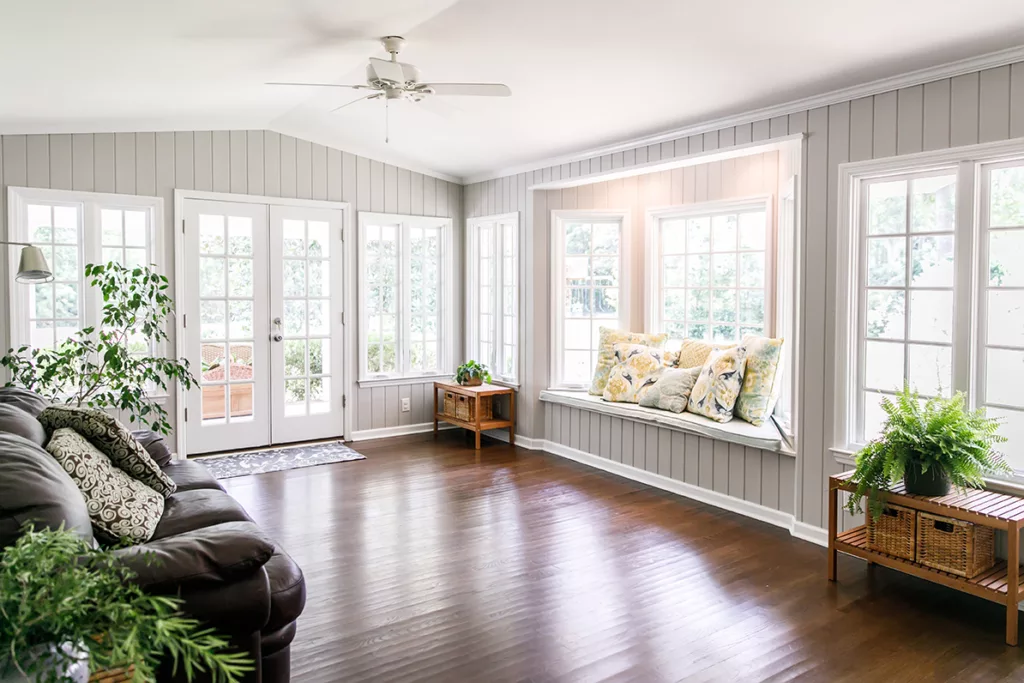Windows are more than just openings that bring in natural light; they are architectural elements that have the power to transform the atmosphere and aesthetic of your home. Designing a window-focused home involves thoughtfully integrating windows into your interior layout, creating a seamless connection between the indoors and the outdoors. In this article, we explore how to harness the potential of windows to enhance your living spaces and create a truly captivating environment.
1. Embracing Natural Light:
Natural light is a fundamental element that can influence the mood and ambiance of any room. Incorporating large, strategically placed windows floods your interiors with sunlight, making spaces feel more open, vibrant, and inviting. Consider floor-to-ceiling windows, bay windows, or even skylights to maximize the infusion of natural light.
2. Framing Views:
Windows serve as artistic frames that capture the beauty of your surroundings. Whether it’s a scenic landscape, a serene garden, or an urban skyline, positioning windows to frame captivating views can enhance the visual appeal of your home. Thoughtful window placement can turn your interior into a living tableau of nature’s artistry.
3. Seamless Indoor-Outdoor Flow:
Creating a seamless transition between indoor and outdoor spaces is a hallmark of window-focused design. Sliding glass doors, French doors, or folding glass walls blur the boundaries between your interior and exterior, allowing you to enjoy the beauty of your surroundings while comfortably nestled indoors.
4. Architectural Drama:
Windows can be more than just functional; they can serve as captivating architectural features. Arched windows, transom windows, and geometric shapes add a touch of drama and uniqueness to your interior design. These distinctive windows become focal points that infuse character and charm into your living spaces.
5. Functional Placement:
Integrating windows into your interior layout involves considering both aesthetics and functionality. Place windows strategically to enhance ventilation, provide cross-breezes, and optimize energy efficiency. Awning windows, casement windows, and clerestory windows are excellent options for promoting air circulation.
6. Privacy and Balance:
While maximizing natural light is a priority, maintaining privacy is equally important. Incorporate windows with frosted or textured glass, or consider adding window treatments that offer a balance between openness and seclusion. Blending openness with privacy ensures a comfortable and harmonious living environment.
7. Showcasing Interiors:
Well-placed windows can showcase the interior elements of your home, such as architectural details, artwork, and furniture. Use windows as a canvas to highlight the design elements that define your personal style, allowing them to shine in the natural light.
8. Sustainability and Energy Efficiency:
Window-focused design can also contribute to sustainability and energy efficiency. Choose energy-efficient windows with low-E coatings and proper insulation to minimize heat loss and gain. Harness the sun’s warmth during colder months and optimize shading during warmer months for a comfortable and eco-friendly home.
Conclusion: Illuminating Design Brilliance:
Designing a window-focused home goes beyond practicality—it’s an artistic endeavor that merges architecture, aesthetics, and functionality. By thoughtfully incorporating windows into your interior layout, you’re creating a canvas for natural light, views, and beauty to take center stage. The result is a harmonious and captivating living environment that seamlessly merges indoor and outdoor worlds.
Contact us today to explore window solutions that can help you create a window-focused home that is both visually stunning and functionally exceptional. Let us be your partner in bringing your window-focused design dreams to life.


